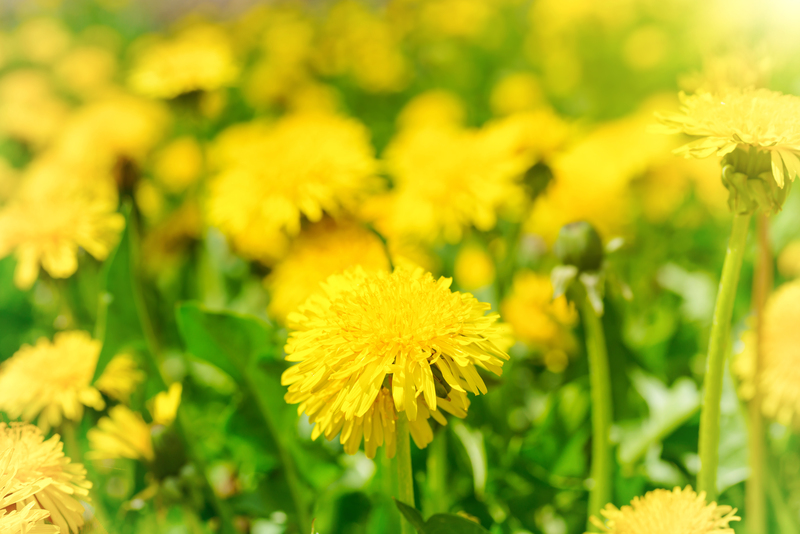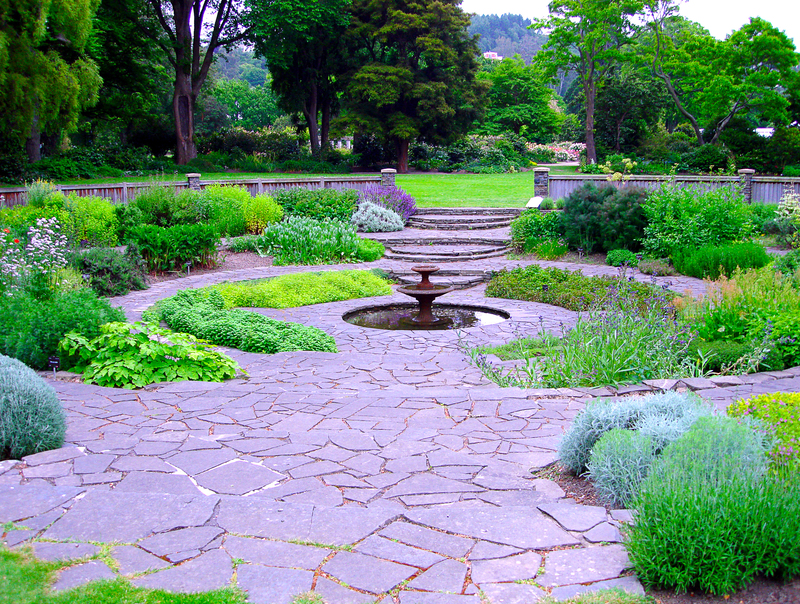First-Time Lawn Owner's Guide: Secrets for Achieving Green Glory
Owning a lawn for the very first time is both exciting and overwhelming. That lush, green expanse symbolizes relaxation, fun, and curb appeal, yet achieving and maintaining it can seem like a secret only the experts know. This First-Time Lawn Owner's Guide unveils the best-kept secrets for cultivating a thriving, vibrant lawn. Whether you have a tiny backyard or a sprawling landscape, these expert tips for achieving green glory will put you well on your way to becoming a savvy lawn owner.
Understanding Your Lawn: The Basics Matter
Know Your Grass Type
Your journey to a picturesque yard begins with identifying your grass. Not all grass is created equal, and the right choice makes a world of difference. In North America, lawns are typically categorized as cool-season grasses (like Kentucky bluegrass, tall fescue, or perennial ryegrass) or warm-season grasses (like bermudagrass, zoysia, or St. Augustine).
- Cool-Season Grasses: Thrive in northern regions with chilly winters and moderate summers.
- Warm-Season Grasses: Perform best in hotter climates and are more tolerant of drought.
Identify your existing lawn or choose a suitable grass variety for your region to set a strong foundation for lawn care success.
Test Your Soil--The Hidden Secret
The secret to a healthy lawn is underground. Performing a soil test is essential for first-time lawn owners because it reveals the pH and nutrient levels. Most lawns thrive in soil with a pH between 6.0 and 7.0.
- Soil tests are available at your local garden center or through cooperative extension services.
- If the pH is too low (acidic) or too high (alkaline), use additives like lime or sulfur to correct it.
- Amend your soil depending on its deficiencies--add compost for nutrients or sand for drainage if needed.

Creating Your Green Lawn: A Step-By-Step Blueprint
1. Starter Lawn Care Essentials for Beginners
The foundation for green glory is lawn preparation and basic maintenance. Follow these tips to set your grass up for success:
- Remove Debris: Clear rocks, sticks, and weeds before seeding or sodding.
- Loosen the Soil: Use a rake or rototiller for good seed-to-soil contact.
- Leveling: Smooth out bumps and fill depressions for a more even lawn.
- Choose Seeds or Sod: Pick according to your climate, soil type, and desired look.
2. Mowing for the First Time--And Every Time
Mowing is more than just cutting grass--it's about encouraging healthy, dense growth. These mowing secrets help new lawn owners avoid rookie mistakes:
- Don't Mow Too Short: Aim to cut no more than one-third of the blade at a time.
- Sharp Blade: Always mow with a sharpened blade for a clean cut and less lawn stress.
- Mowing Height: Most lawns do best at 2.5 to 3.5 inches high.
- Vary Your Pattern: Change mowing direction each time to prevent rutting and encourage upright growth.
3. Watering Wisdom: Not Too Much, Not Too Little
Overwatering is a common beginner mistake--too much water promotes disease and shallow roots. Underwatering stresses the grass and creates brown patches.
- Early Morning is Best: Water between 6-9 AM to minimize evaporation and fungal growth.
- Infrequent, Deep Watering: Water thoroughly but less often--about 1 inch per week is ideal, including rainfall.
- Watch for Signs: Wilted grass or footprints that linger indicate drought stress.
4. The Fertilizer Formula for First-Timers
Fertilization is the secret sauce for achieving a green, healthy lawn. Use a slow-release fertilizer with a nutrient ratio suitable for your soil and grass type. Key tips include:
- Follow the Calendar: Fertilize cool-season grasses in fall and spring, warm-season lawns in late spring through summer.
- Don't Overdo It: Over-fertilizing burns grass and forces weak growth. Less is more!
- Organic Options: Consider compost or organic fertilizers for gentle, sustained feeding.
5. Dealing With Weeds, Pests, and Lawn Disease
Even the healthiest lawns face threats. *New lawn owners* should familiarize themselves with proactive strategies:
- Outcompete Weeds: Thick, healthy grass keeps weeds out. Use pre-emergent herbicides in early spring if needed.
- Identify Pests: Look for grubs, chinch bugs, or signs of hungry critters. Spot-treat only where needed.
- Avoid Fungus: Correct drainage issues and water early in the day to prevent fungal diseases.
Advanced Strategies: Secrets for Wow-Worthy Green Lawns
Core Aeration: Oxygen for Roots
Over time, soil becomes compacted, choking roots and reducing vigor. *Aerate your lawn* at least once a year, especially in high-traffic areas. This process pulls small plugs from the soil, improving water, nutrients, and air penetration.
- When to Aerate: Cool-season grasses benefit from fall aeration, while warm-season types should be aerated in late spring.
- DIY or Pro: Rent a core aerator or hire a professional for larger lawns.
Overseeding: Thickening the Turf
Patchy lawns can be revitalized by overseeding. This process spreads new seed over existing grass, thickening swards and filling bare spots for impressive color.
- Combine With Aeration: After aerating, spread seed to ensure good soil contact.
- Keep Moist: Light, frequent watering is essential until new grass is established.
Lawn Renovation: When All Else Fails
If your lawn is in rough shape, total renovation may be necessary. This means removing existing grass and weeds, amending the soil, and starting fresh. While labor-intensive, this is sometimes the quickest way to a truly green, healthy lawn.
Seasonal Lawn Care: Year-Round Green Glory
Spring Lawn Care Tips
- Rake thoroughly: Remove winter debris, dead grass, and thatch.
- Test soil: Amend pH if required.
- Fertilize and seed: Start the season strong.
- Spot treat weeds: Use pre-emergents before weed seeds sprout.
Summer Lawn Strategies
- Mow high: Taller grass shades soil, fewer weeds invade, and roots are protected from heat.
- Water efficiently: Deep, infrequent waterings.
- Monitor for pests: Keep an eye out for insect or fungal activity.
Fall Lawn Maintenance
- Rake leaves promptly: Leaves block sunlight and increase disease risk if left on the lawn.
- Fertilize: Fall feeding builds strong roots for winter survival and lush spring growth.
- Aerate: Fall is ideal for core aeration and overseeding in cool-season lawns.
Winter Lawn Care (Where Applicable)
- Minimize traffic: Avoid walking on frozen or dormant grass, which damages crowns.
- Clear debris: Keep lawn free of sticks and winter clutter.
- Plan ahead: Order seeds and supplies for spring.
Lawn Care Tools: What Every New Lawn Owner Needs
Essential Equipment List
- Lawn mower: Push, reel, or riding mower, depending on lawn size.
- String trimmer: For edges and tight spots.
- Rake: For debris and thatch removal.
- Hose and sprinkler: Watering made easy.
- Spreader: Even application of seed and fertilizer.
- Soil test kit: Understanding your soil is half the work.
- Hand tools: Shovel, trowel, and weed puller for spot jobs.
Keeping Equipment in Top Shape
- Sharpen mower blades regularly for efficient cutting.
- Clean equipment after use to prevent disease spread.
- Store tools in a dry, covered area to avoid rust and weathering.
Eco-Friendly and Sustainable Lawn Secrets
Natural Lawn Care for First Timers
Going green means more than just color. Sustainable practices protect your yard and the planet:
- Use organic fertilizers to reduce chemical runoff.
- Embrace native grasses for low maintenance, drought tolerance, and habitat support.
- Leave grass clippings on the lawn. They break down to return nutrients naturally.
- Reduce watering and mowing frequency where possible for savings and a healthier ecosystem.
Composting: Black Gold for Green Grass
Compost is an easy, eco-friendly alternative to synthetic fertilizers. Start a bin for food scraps and yard waste, and spread finished compost each spring and fall for nutrient-rich, resilient grass.
Common Challenges for New Lawn Owners & How to Overcome Them
Overcoming Bare Patches
- Identify the cause: Heavy traffic, pests, or shade?
- Choose the right fix: Overseed, apply loam and seed mix, or use shade-friendly grass.
- Protect while establishing: Use nets or fences if pets are culprits.
Managing Lawn Weeds Naturally
- Manual removal: Best for small lawns or isolated weeds; get roots and all.
- Mulch: Use organic mulch in flowerbeds to keep weeds at bay.
- Corn gluten meal: A natural pre-emergent for lawns.
Handling Drought and Heat
- Raise mower height: Shade soil and conserve moisture.
- Water deeply and less often: Encourage deep, drought-resistant roots.
- Accept dormancy: Healthy grass will recover after a dry spell.

DIY or Professional Lawn Care: Finding Your Fit
Benefits of Doing It Yourself
- Save money on maintenance costs.
- Learn as you grow--greater pride and connection to your yard.
- Flexibility: Care for your lawn on your own schedule.
When to Call in the Pros
- Large lawns or complex landscapes.
- Persistent pests or diseases.
- Major renovations or specialty treatments like hydroseeding.
Pro Tips: Going From Good to Glorious
- Stay consistent--not perfect. Regular mowing, watering, and observation are your best allies.
- Observe, enjoy, and adapt. Every lawn is different. Notice what works for your unique climate, soil, and grass.
- Share the joy. Invite neighbors, friends, and family to enjoy your green space!
Achieving the green glory of your dreams isn't as mysterious or difficult as it may seem. By following these first-time lawn care secrets, you'll foster a resilient, beautiful lawn that will be the envy of the neighborhood--all while enjoying time outdoors, learning essential skills, and contributing to a more sustainable environment. With a little patience and the right know-how, your lawn will flourish year after year!